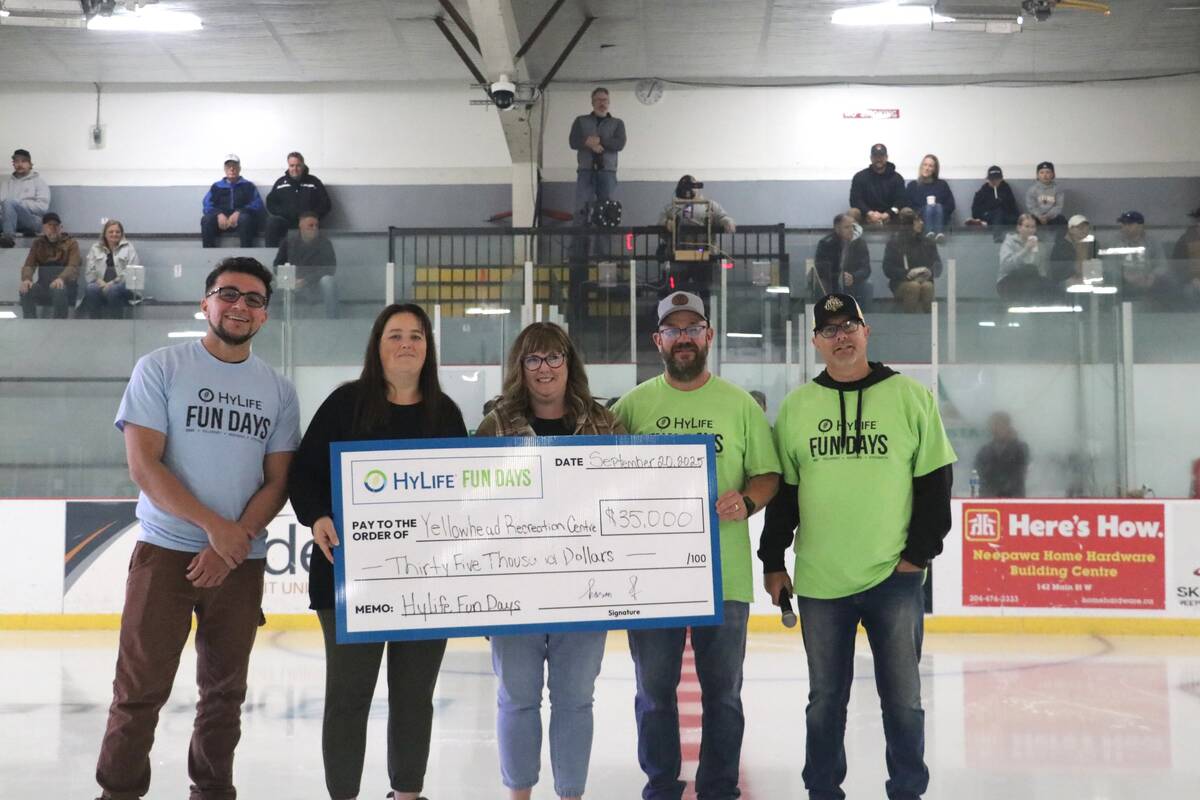Fast pyrolysis | Process turns crop residue into a variety of products
Scientists are looking for ways to turn unwanted agricultural residues into value-added products such as heating oil and agricultural fertilizers.
Erin Powell, a research scientist with the Saskatchewan Research Council, says a process known as fast pyrolysis has the potential to turn agricultural residues, such as straw and manure into a variety of products that could be used in agricultural and industrial applications.
“Farmers are looking for avenues to manage residues and waste, and creating value-added products from that material makes it even more attractive,” Powell said.
Read Also

Manitoba community projects get support from HyLife
HyLife Fun Days 2025 donated $35,000 each to recreation and housing projects in Killarney, Steinach and Neepawa earlier this fall.
Pyrolysis is a process that breaks down material using heat in the absence of oxygen.
Through pyrolysis, feedstock materials such as straw and manure are converted into three products: a liquid bio-oil, a gaseous fuel and a granular bio-char, similar to fine charcoal.
The SRC uses a mobile pyrolysis unit to demonstrate the process and determine whether it is economically viable to turn low-value agricultural residues into value-added materials.
The trailer-mounted unit can be moved, which eliminates the need to transport large volumes of low quality material to a central processing location.
The machine can handle roughly one tonne of raw material per day, Powell said.
Feed materials are first ground or chopped into small particles and moisture content is reduced 10 percent or lower using a built-in dryer. Five percent or less is ideal.
The pre-processed material is then fed into the pyrolysis unit and exposed in an air-tight chamber to super-heated steel shot.
The steel shot is roughly the size of a canola seed and is circulating at a high speed.
When the feedstock contacts the steel shot, the material vapourizes instantly.
The resulting biochar is separated from the steel shot and collected in an external container.
Vaporized material is cooled rapidly and separated into a liquid oil and a combustible gaseous fuel.
The gas is recirculated and burned to help power the pyrolysis unit.
Char and oil are collected and taken off site for further refinement and processing.
The characteristics of the oil, gas and char will vary depending on the type of feedstock used, its moisture content and the processing temperatures applied during the pyrolysis process.
The SRC has tested the unit at temperatures ranging from 400 C to 600 C.
Powell and others have recently completed a project that focused on making pyrolysis viable and practical for Saskatchewan farmers.
That project, which received funding through the Saskatchewan government’s Agriculture Development Fund, was based on previous research that examined the applicability of pyrolysis on three feedstocks — wheat straw, flax straw and poultry litter.
“We’re actually focusing a lot on what we can do with these products and how can we make them valuable enough to make this process worthwhile to farmers and producers who might want to use this technology,” said Powell.
Much of Powell’s most recent research has examined the feasibility of upgrading raw bio-oil from pyrolysis to the standard of a No. 2 heating oil.
The oil produced during pyrolysis tends to have higher acidity than regular heating oil, higher viscosity, more moisture and a higher oxygen content.
Further refinement is required before the oil could replace commercial heating fuel.
The stability of the oil is also a concern.
The biochar is a fine, dust-like substance that is black, porous and absorbent.
The material could be used as a soil amendment to deliver chemicals or fertilizers in agricultural production.
It could also be used in environmental bioremediation to deliver microbes of other substances that interact with potentially harmful chemicals or soil-borne toxins.
There is also potential to extract high-value compounds from the bio-oil and use them in other applications, Powell said.
For now, however, the SRC is hoping to find applications that will benefit farmers and allow them to use the gas, oil and char in producing crops or livestock and offsetting production costs.
“There’s quite a range of ways to make this (technology) valuable,” Powell said.
“The ultimate goal is to … use this (technology) to offset the costs of primary production.”















